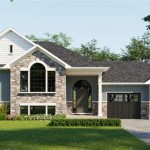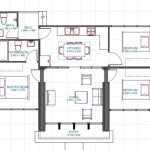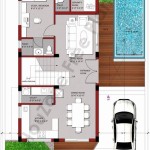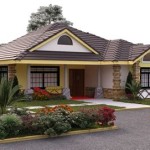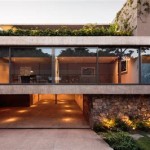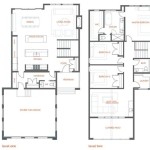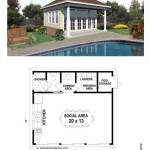Low Country Cottage House Plans: Embrace Southern Charm and Coastal Living
Low Country cottage house plans evoke a sense of timeless elegance and relaxed coastal living. Originating in the coastal regions of South Carolina and Georgia, these homes are characterized by their unique architectural details and adaptability to warm, humid climates. Whether seeking a primary residence, a vacation getaway, or a retirement haven, exploring Low Country cottage designs offers a wealth of inspiration.
Key Features of Low Country Cottage House Plans
Several architectural elements define the Low Country cottage style. Understanding these features provides a framework for identifying and appreciating this distinct architectural tradition.
Elevated Foundations: Historically, elevated foundations protected against flooding and provided ventilation in the humid Low Country climate. Today, raised foundations continue to be a defining characteristic, offering practical benefits and contributing to the classic Low Country aesthetic.
Large Porches and Verandas: Expansive porches and verandas are integral to Low Country living, providing shaded outdoor spaces for relaxation and entertainment. These outdoor areas often wrap around multiple sides of the house, blurring the lines between indoor and outdoor living.
Broad, Gable Roofs: Low Country cottages typically feature broad, gently sloping gable roofs, often with dormers. These roofs are designed to shed heavy rainfall and provide attic space for ventilation, contributing to the home's comfort in hot and humid weather.
Metal Roofs: Metal roofs are a common sight on Low Country cottages. Not only do they contribute to the distinctive aesthetic, but they are also highly durable and long-lasting, standing up to the coastal climate.
Choosing the Right Low Country Cottage Plan
Selecting the right house plan involves careful consideration of various factors, including lifestyle, budget, and desired features. A thorough evaluation of these aspects will lead to a successful and satisfying building experience.
Size and Layout: Low Country cottage plans range from cozy one-story designs to larger two-story homes with multiple bedrooms and living areas. Carefully consider the desired square footage and room layout to ensure the plan aligns with specific needs and preferences.
Number of Bedrooms and Bathrooms: Determining the required number of bedrooms and bathrooms is essential. Consider current and future needs, accounting for potential guests and family growth.
Outdoor Living Spaces: Prioritize the incorporation of porches, verandas, and decks to maximize the enjoyment of the Low Country's pleasant climate. Consider the size and placement of these outdoor areas to create functional and inviting spaces for relaxation and entertainment.
Adapting Low Country Cottage Plans to Modern Living
While honoring the traditional elements of Low Country architecture, modern adaptations can enhance functionality and comfort.
Open Floor Plans: Incorporating open floor plans creates a sense of spaciousness and encourages interaction between living areas. This modern adaptation complements the casual and relaxed atmosphere of Low Country living.
Energy Efficiency: Integrating energy-efficient features, such as high-performance windows and insulation, reduces energy consumption and contributes to long-term cost savings. These modern updates align with sustainable building practices without compromising the classic Low Country aesthetic.
Smart Home Technology: Integrating smart home technology allows for automated control of lighting, temperature, and security systems, enhancing convenience and security. These technological advancements seamlessly blend with the traditional charm of Low Country cottage designs.
Finding Low Country Cottage House Plans
Locating suitable house plans requires exploration of various resources, both online and offline. A comprehensive search will yield a diverse selection of designs to choose from.
Online Plan Resources: Numerous websites specialize in providing a vast collection of house plans, including Low Country cottage designs. These online resources often offer customizable options and detailed specifications.
Architectural Firms: Consulting with an architectural firm allows for customized design solutions tailored to specific needs and preferences. Architects can incorporate unique elements and adapt existing plans to create personalized Low Country cottage designs.
Home Builders: Many home builders offer pre-designed Low Country cottage plans as part of their services. Working with a builder streamlines the construction process and provides access to their expertise and resources.
Building Your Low Country Cottage
Building a home is a significant undertaking, requiring careful planning and execution. Understanding the key steps involved ensures a smooth and successful building process.
Selecting a Builder: Choosing a reputable and experienced builder is crucial. Research potential builders, review their portfolios, and obtain references to ensure they align with project requirements.
Budgeting and Financing: Establish a realistic budget and secure financing before commencing construction. Accurate budgeting prevents financial surprises and ensures the project stays on track.
Construction Timeline: Develop a realistic construction timeline in collaboration with the builder. Understanding the estimated timeframe facilitates planning and manages expectations.
Landscaping for Your Low Country Cottage
Landscaping plays a vital role in enhancing the curb appeal and creating a welcoming outdoor environment. Selecting appropriate plants and hardscaping materials complements the Low Country aesthetic.
Native Plants: Incorporating native plants creates a low-maintenance and environmentally friendly landscape. Native vegetation thrives in the local climate and requires less watering and fertilization.
Hardscaping Materials: Choose hardscaping materials, such as brick walkways and patios, that complement the home's architecture. These materials add visual interest and create functional outdoor spaces.
Outdoor Lighting: Strategically placed outdoor lighting enhances safety and security while highlighting the home's architectural features. Consider incorporating path lighting, accent lighting, and porch lighting to create a welcoming ambiance.

William E Poole Designs Low Country Cottage Inc

Lowcountry Farmhouse House Plans Cottage Southern

William E Poole Designs Low Country Cottage Inc

Low Country House Plans Floor

Sweet Low Country Cottage Homes House Styles

Low Country Architecture Beach House Plans From Home Designs

Low Country House Plans Floor Designs Houseplans Com

Low Country Home Chic Cottage House Plans Homes

Rustic Low Country Cottage 2 Bedrms Baths 1400 Sq Ft 153 1649

Low Country House Plans Coastal From Home

